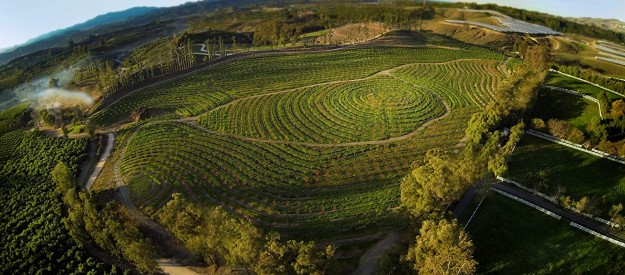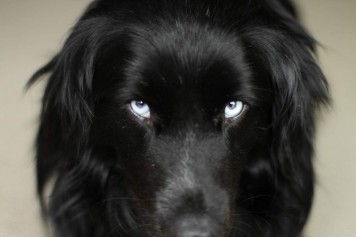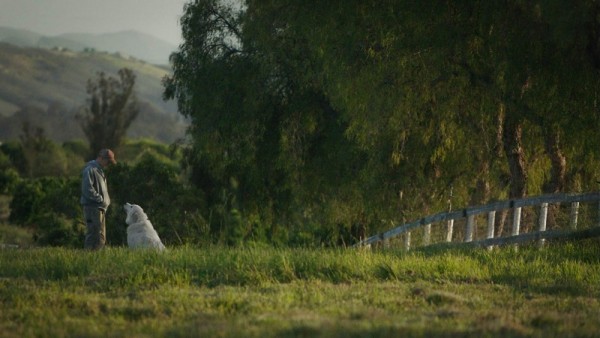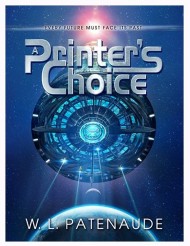"We are losing our attitude of wonder, of contemplation, of listening to creation and thus we no longer manage to interpret within it what Benedict XVI calls 'the rhythm of the love-story between God and man.'"
+ Pope Francis
Celebrating life, natural law on a family farm

“Art consists of reshaping life, but it does not create life nor cause it.” Stanley Kubrick
A new, must-see film about a young couple struggling to farm in cooperation with nature is, at its core, a film about life—about its cycles and interconnectedness, its joys and sorrows, its dignity, beauty, and, especially, its inherent order.
In other words, it’s a film about truth, beauty, and goodness.
"The Biggest Little Farm" should be seen for these lessons, yes. But you’re also going to enjoy its striking cinematography. Frame after frame caresses the film’s most important character: Apricot Lane Farm, with its once-dead landscape now green, wet, and alive. It’s imagery you want to walk into. Imagery you can smell and feel squish under your feet.
The ninety-minute film follows John and Molly Chester as they leave their small Los Angeles apartment to rehabilitate a 200-acre farm in the foothills of Ventura County, about an hour north of the city. Neither have prior experience farming. John is a filmmaker (as well as the film’s co-writer and narrator) and Molly is a cook specializing in the use of natural foods.
Combining their talents, they arrive with two goals: to provide their dog Todd with a home (where he can run and bark freely) and to prove that traditional, natural farming works and works well. (I should note that anyone who’s ever had a dog steal their hearts will appreciate the link between Todd and the Chesters’ decision to finally adopt farming life.)

There’s just one problem: John and Molly’s new farm is pretty much dead. Abandoned and long the victim of industrial farming practices, its land is depleted of the nutrients and microorganisms needed to transform dirt into living soil and living soil into Eden.
The film chronicles eight years of hard work and idealism as John, Molly, and Todd attempt to breathe life into death, planting 10,000 orchard trees and over 200 different crops—including cover crops—and bringing in animals of every kind.
Tutored by Alan York, an eccentric expert in back-to-nature farming practices, and assisted with financial backers and a team of equally idealistic young men and women, the Chesters eventually prove what farmers and gardeners knew for millennia: nature knows what it’s doing, we just need to let it do it.
Besides these lessons and its beauty, the film benefits from telling John and Molly’s Herculean efforts. Cooperating with the natural order isn’t always easy, especially when each success brings unexpected problems: living soil brings abundant fruits, but the fruit attracts fruit-eating brings birds and snails; free-range chickens bring a lucrative egg business. But the chickens attract coyotes.
Alan insists that everything has a purpose—that everything is connected, as Pope Francis reminds us throughout his eco-encyclical Laudato Si’. It’s just that sometimes the answer to a particular problem, like an infestation of snails, isn’t clear.
And Alan will not always be around to help—a reality that allows the film to underscore the impermanence of a fallen world.
Then there’s the drought. And wildfires. And the torrential rains.
Ultimately, the farmers adapt and the land thrives. As do Molly and John, and their newborn son. The health of the soil and its cover crops buffer California’s wild swings in rainfall, keeping the soil moist during dry spells and preventing the washout of topsoil when dozens of inches of rain rip apart the dead, exposed soils of neighboring, chemical-based farms.
For Catholic Ecologists, "The Biggest Little Farm" thus becomes a teaching tool for matters of both faith and reason and the relationship between the two.
The film champions regenerative farming—and does so convincingly. And it reminds us that sin is a reality in this fallen world.
Moreover, the Chesters’ desire to farm with the natural order in mind serves as a reminder that there are inherent laws embedded within creation, and we would do well to live by them.

The cycles of nutrients and moisture shared from one organism to another is how all ecosystems work. Modern farming’s attempt to accelerate food production to feed growing demands is, many believe, short-sighted. The harms caused by petrochemical-based fertilizers and pesticides, not to mention monocultures, are cumulative and end up damaging both humans and the very ecosystems that allow life to thrive in the first place.
Farming as the Chesters do results in sustainable ecosystems that not only survive natural stresses but that are also stunningly beautiful. This shouldn’t be a surprise, however. The transcendental realities of truth, beauty, and goodness are always related.
For Christians, the film showcases another lesson. Many of the struggles faced by the Chesters and their farm illustrate the reality of sin. Several scenes reminded me of these words by God to Adam after they had fallen from grace:
Cursed is the ground because of you!
In toil you shall eat its yield
all the days of your life.
Thorns and thistles it shall bear for you,
and you shall eat the grass of the field.
By the sweat of your brow
you shall eat bread,
Until you return to the ground,
from which you were taken;
For you are dust,
and to dust you shall return. (Genesis 3:17-19)
Those watching the film through the eyes of faith will be struck that this revealed scriptural truth is sometimes a revelation to John and Molly. And here is where Christian viewers may want a little more from "The Biggest Little Farm."
Many of John’s observations are Christian tenets—but as the film is designed for secular audiences, they’re not explored in that light. Some, on the other hand, border on gnostic notions that minimize the dignity of the human person.
And yet, John and Molly (and the viewer) are drawn to appreciate the natural order of God’s created order—an order that calls for humanity’s cooperation with the Creator’s ongoing work; an order that is perfect but that is also broken and in need of salvation by some greater reality than human effort.
In this regard, the film sometimes suffers from its lack of religious context. This was, for me, the only drawback to an excellent film that, one hopes, will help change the way the world is farmed everywhere.
 "The Biggest Little Farm" is rated PG.
"The Biggest Little Farm" is rated PG.
For more information, including show times and locations, visit its website here.
For more about the Apricot Lane Farm, including information on visiting it, click here.
Produced by
John Chester ... producer
Sandra Keats ... producer
Laurie Lennard ... executive producer
Erica Messer ... executive producer
Music by Jeff Beal
Cinematography by
John Chester ... director of photography
Mallory Cunningham
Benji Lanpher
Chris Martin
Kyle Romanek
Photos via NEON. Used with permission.


















